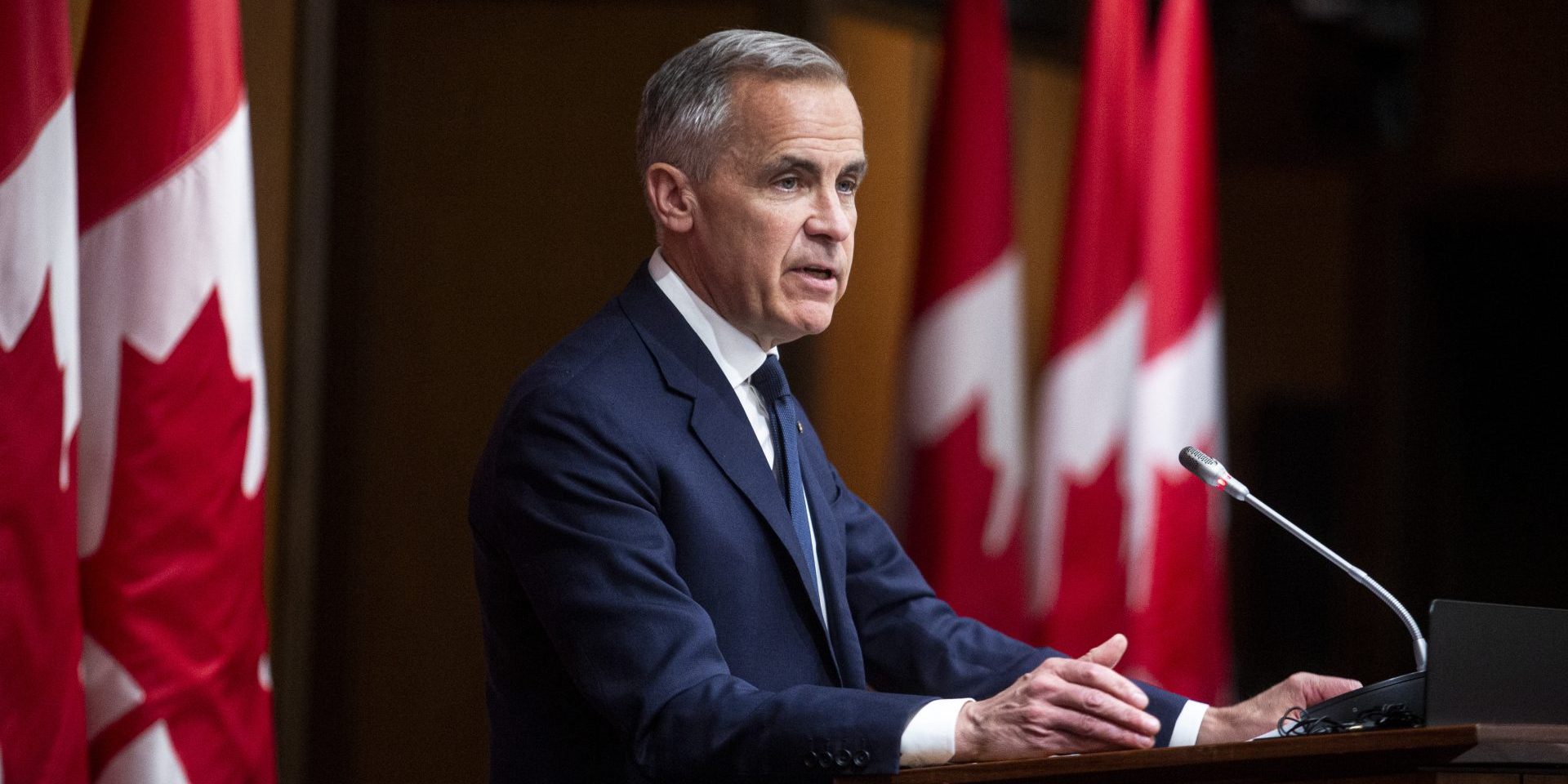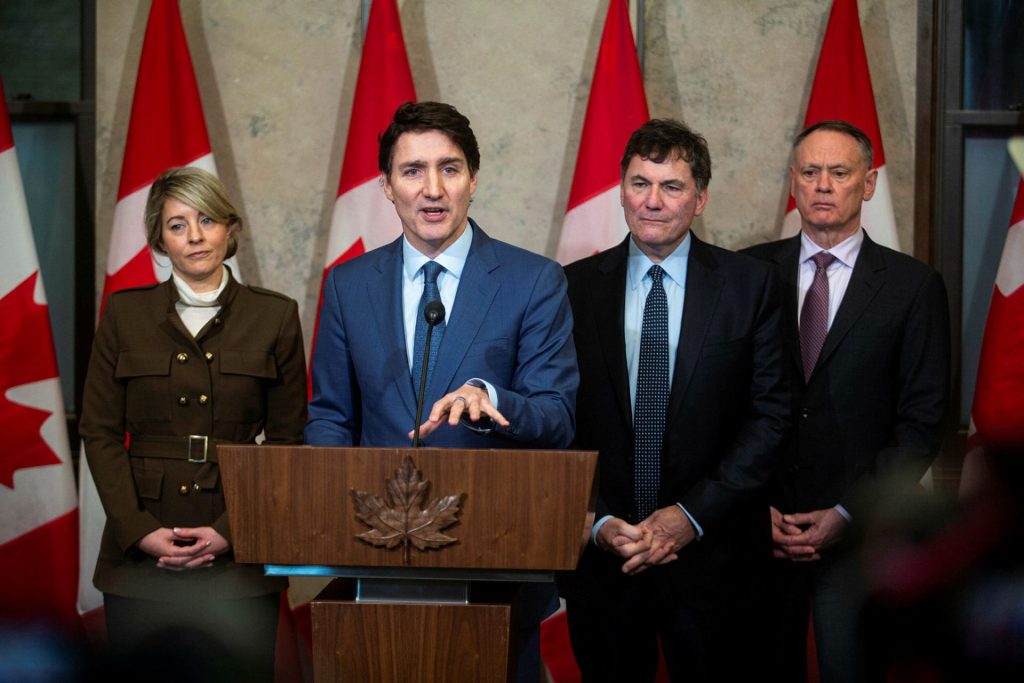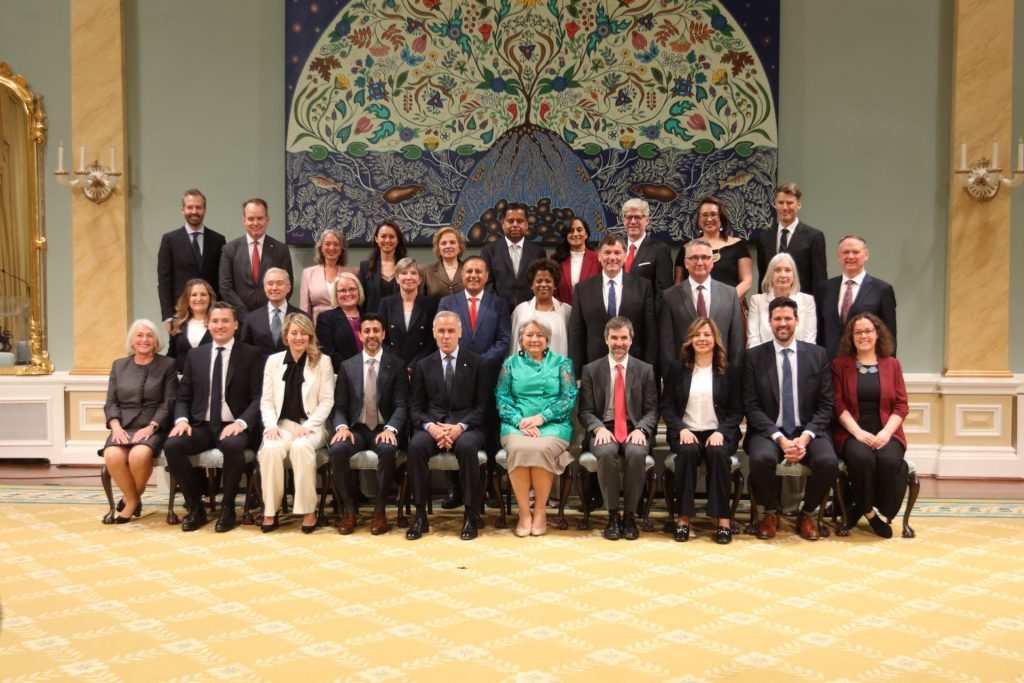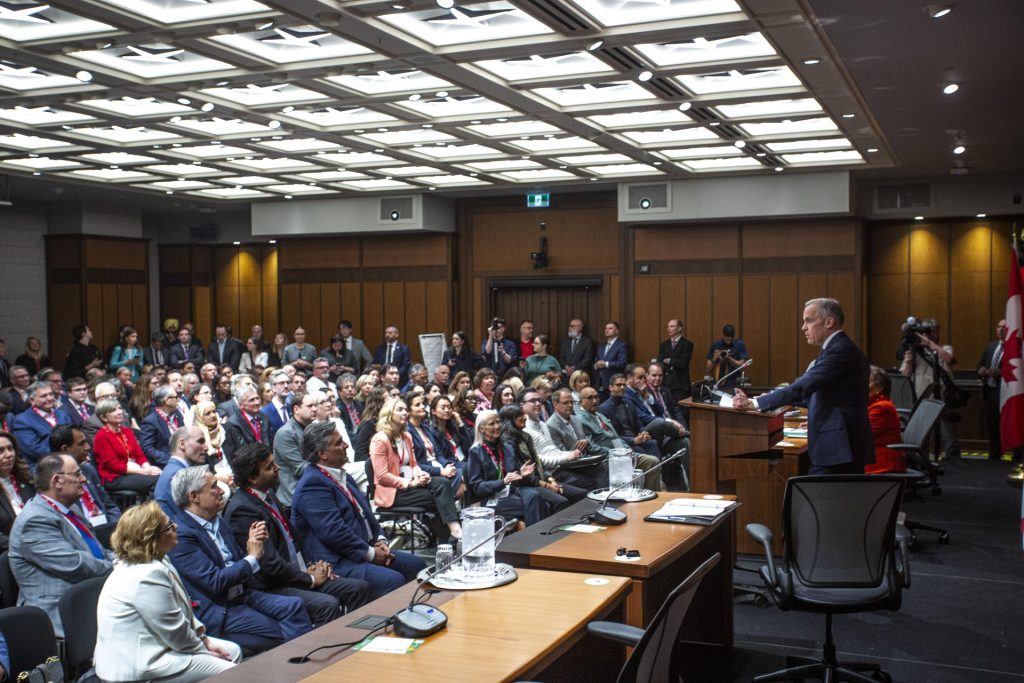Carney benches Trudeau’s ‘Hallmark card’ mandate letter format, opts for broad priority list for all ministers

Prime Minister Mark Carney is striking “the right balance” with his single public cabinet mandate letter, departing from his predecessor’s “unfocused,” “rambling,” public relations approach that observers say neutralized the priorities meant to direct ministers and keep them—privately—accountable.
In a break from former prime minister Justin Trudeau’s tradition, Carney (Nepean, Ont.) released a sole letter to his 28 ministers on May 21. It is short and broad, outlining only seven priorities for his senior team, with none aimed at specific ministries. At about 800 words, it stands in sharp contrast to Trudeau’s lengthy mandate letters, which sometimes exceeded 3,000 words, were specific to each minister, and outlined itemized lists of initiatives ministers were responsible for completing.
Some who have worked in the Privy Council Office or the Prime Minister’s Office (PMO) under former governments say this shift away from long public mandate letters is a good move, calling Trudeau’s mandate letters—which were made public in a commitment to governmental transparency—“a communication device” intended for public consumption, stripping the missives of their purpose, which was to inform ministers of their priorities. Carney’s approach leaves it to his ministers to respond to his letter with their individual priorities, which will likely not be made public.
“What Trudeau did—which I thought was an abomination—was essentially turned the mandate letter, which is a statement of priority to a minister, into a communications device,” said Mel Cappe, a retired public servant who served as clerk of the Privy Council as well as special adviser to then-prime minister Jean Chrétien, among other senior positions. “It’s not intended for that.”
Prior to Trudeau’s move to publicize mandate letters in 2015, such cabinet instructions were confidential communications, seen only by ministers, the prime minister, and some senior civil servants. Some saw Trudeau’s move as a step forward for accountability and transparency, but the shift also resulted in lengthy—and sometimes delayed—mandate letters, which were often chock full of repeated campaign promises and long introductions to set up the included initiatives.
In Cappe’s view, this altered the letters’ utility for the worse.
“[Trudeau] listed everything that could be put into a mandate letter,” said Cappe, who penned a 2022 op-ed denouncing the requirement to make mandate letters public in Ontario, a decision which was later struck down by the Supreme Court. “If you look at the minister of finance’s mandate letter from Justin Trudeau, it had about 150 priorities. Now, if you have 150 priorities, you have no priorities.”
Trudeau’s 2021 mandate letter to then-deputy prime minister and minister of finance Chrystia Freeland (University-Rosedale, Ont.) contained 51 “commitments” in bullet-point format, coming in at over 3,300 words in length.
In 2015, the first year of Trudeau’s public mandates, the total tally of initiatives ministers were instructed to complete was 289. The government later tracked these initiatives in their Mandate Letter Tracker, and reported that 219 initiatives were met, 65 had “progress made” on them, and only five were not met and “not being pursued.”

Senator Percy Downe (Charlottetown, P.E.I.), who is the liaison for the Canadian Senators Group and who also served as chief of staff for Chrétien prior to his Senate appointment, said the Trudeau approach to mandate letters was to treat them “like Hallmark cards.”
“They have captured every trendy comment or anything that was perceived to be right for the times,” Downe told The Hill Times. “They were unfocused, and they were rambling. And you have to have a set of priorities. You can’t have 500 priorities.”

Carney’s mandate letter, while more concise than Trudeau’s, does contain an introduction where campaign pledges are repeated. Unlike Trudeau’s missives, the introduction is broader in scope, shorter, and focused on overarching goals. The letter begins by addressing the “geopolitical risks” facing Canada, repeating promises to “redefine” this country’s relationships, increase infrastructure development speeds, and build the economy, among other campaign pledges.
It then outlines the following seven priorities in a numerical list: establishing a “new” relationship with the United States, and strengthening Canada’s trading relationship with other countries, improving the economy by removing interprovincial trade barriers and expediting “nation-building” projects, improving affordability, making housing more affordable, improving Canadian military and security, adjusting immigration, and reducing government spending.
The listed priorities are wide-ranging, and not closely tied to specific ministries. In what follows, Carney instructs ministers to “identify how specifically you can contribute to these missions” as well as identify “key goals” and “measures of success” that can be used to evaluate their results.
This leaves Carney’s ministers with the task of compiling and outlining their individual priorities within their departments. Unlike the released mandate letter, these responses are unlikely to be made public—a clear move away from Trudeau’s long bullet-point public lists for each ministry.

Brian Klunder, who served as a senior adviser to several ministers under former prime minister Chrétien and then-prime minister Paul Martin, said Carney’s half way between Trudeau’s detailed “PR document” letters and complete confidentiality is “probably the right course of action.”
“I am in favour of mandate letters being public if they’re actually meaningful,” Klunder, senior counsel at the government and public relations firm Temple Scott Associates, told The Hill Times. “But if they’re just a PR exercise, then we might as well go back to them being secret. What I like about the Carney letter is it’s a public letter setting priorities that departments are going to individually have to react to.”
Downe echoed Klunder’s assessment, saying that Carney’s singular, shorter mandate letter “hit the right balance” as it “empowers” ministers to act without needing to run every decision through the PMO, something that Downe said “bottlenecks” the office.
“It’s impossible for the Prime Minister’s Office to be involved in all parts of government,” Downe said. “You end up with slow decisions across government. … You have to empower ministers and their departments to take the action required to deal with the problems within their mandate.”
Downe also highlighted that Carney plans to move swiftly, having promised on the campaign trail that his government would “need to do things previously thought impossible at speeds we haven’t seen in generations”—a phrase that was repeated in the opening paragraphs of his mandate letter. This efficiency, Downe emphasized, requires delegating to ministers and giving them freedom.
On May 25, Carney addressed the Liberal caucus with media present, and repeated his pledge of speed, telling MPs they were going “to be very, very busy in the next few weeks,” months, and years, also committing to introduce legislation “immediately” to address affordability.

But there is a question of whether the release of just one letter signifies the opposite of delegation—that there is only the “one minister” leading operations, and that is Carney.
Scott Reid, former communications director for prime minister Martin and principal and co-founder of Feschuk-Reid, wrote in The Hub that Carney’s choice is “intriguing,” making a clear “emphasis on the sole letter,” and therefore “the sole minister”—the “prime minister.”
“That may not be surprising since the singular offering of Carney propelled the Liberals’ electoral revival,” Reid writes. “But if the message in releasing only one letter is that there is really only one minister, that will start to wear. On Canadians. And on Carney. Even the strongest leaders must be able to count on their ministers to help carry the heavy load of government.”
Having a singular, short mandate letter also calls into question if Carney’s move will result in less opportunity for accountability and scrutiny on his government’s actions and results.
When asked about this, Klunder said there are other ways for the public to gauge the government’s pledges and hold them accountable, pointing to the legislative priorities outlined in the Throne Speech, which was delivered May 27 by King Charles III, as well as tabled budgets and economic statements, as examples.

Cappe offered a similar assessment, also pointing to the need for a level of secrecy between the prime minister and his ministers as a requirement for the PM to hold them accountable, saying there are sufficient means for public accountability without intergovernmental communication being made public.
“The prime minister needs an instrument to hold his ministers to account. He needs to be able to say to a minister, you’re out of line,” Cappe said. “If it’s all public, he can’t do that.”
“There’s public accountability, and that’s on the Speech from the Throne and/or the overarching mandate letter,” he continued. “But the negotiated mandate letter that each minister will write back to the prime minister on is something that the prime minister will use to hold his ministers to account.”
ewand@hilltimes.com
The Hill Times






 LICENSING
LICENSING PODCAST
PODCAST ALERTS
ALERTS













